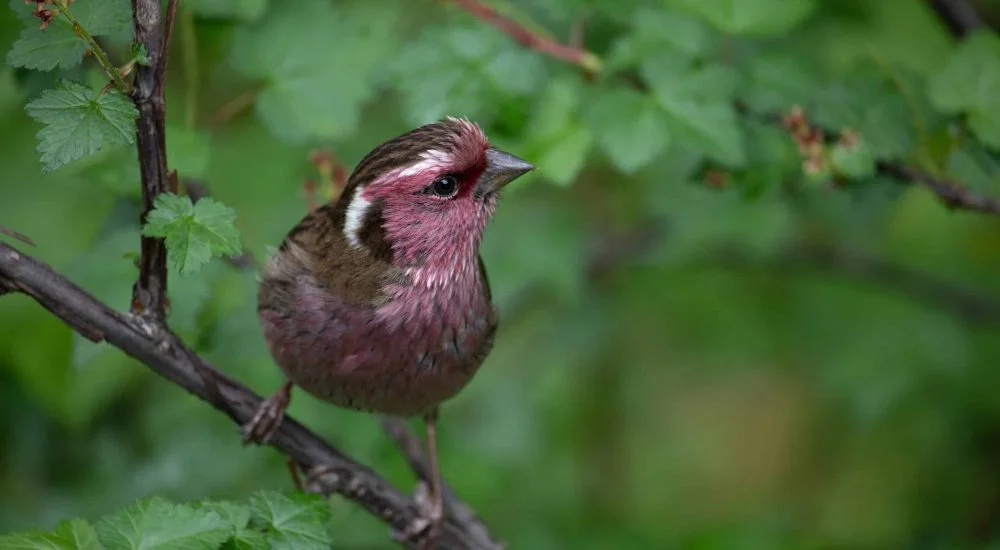
Want to learn more? This book on everything to do with Finches is a fantastic read!
The south of Florida has a tropical climate whilst the central and northern areas of the state have a sub-tropical climate. They have a rainy season that lasts from may till October and their summers are often hot and humid.
There are 175 different state parks spread across the state of Florida and there are three different national parks.
One of the best places to see a variety of finches is Lake Woodruff National Wildlife Refuge.
This refuge is a popular place as a variety of finch species will often pass through this refuge on their path of migration.
Now that we’ve looked at the state of Florida, let’s have a look at the lovely finches you can find there in some more detail.
Want to attract finches? Take a look at our article!
What Finches can be seen in Florida?
Table of Contents
1. House Finch
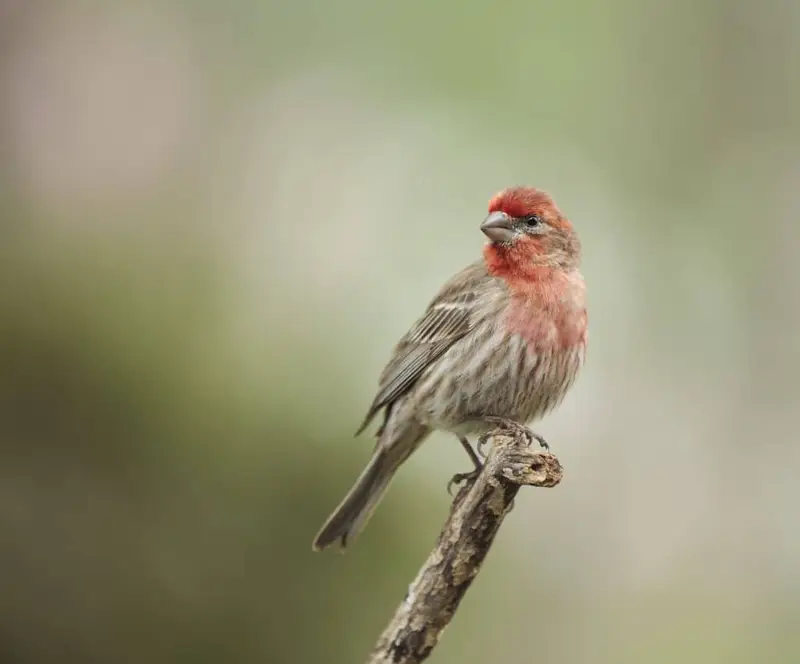
Fun Facts:
- A finch’s diet is dependent on the type of beak they have. House Finches have a seed feeding beak as seeds are their main source of food. The most popular seed for them is the black oil sunflower seed. They also eat certain types of flower buds and fruits, these incluce cherries and thistle.
- House Finches are only very small birds with a small weight range. They range from 16-27g and have only a tiny wingspan of 20-25cm.
There is a lot of sexual dimorphism in finches. Male House Finches have a cherry red plumage and dark brown feathers covering their back. Females of this species instead have grey and brown streaky feathers covering their whole body.
These birds often use human made and placed feeders, preferring to eat and perch there where available. If they do not have access to a bird feeder they will often stay on the ground feeding on any food that other finches may have dropped.
During the mating season a male will court a female by feeding her after she pecks his peak.
Outside of mating season, these birds are still very social and will sometimes form flocks of up to 100 individuals.
Males and females will call to each other during flight, this call is a sharp ‘cheep’ noise and they will also make this call to each other when they are perched.
You will find finches to the north west of Florida. They are present year-round and whilst they are frequent visitors in backyards and city parks, they can also be found in the natural, wild habitat when they are in the west of North America. These wild habitats include deserts and grasslands.
If you want to attract House Finches to your garden, the best way is to place an appropriate feeder in your backyard.
These finches will likely visit your garden if you have a sunflower seed feeder and a source of water.
They will also enjoy and be attracted to suet and nectar feeders. Having a variety of bird feeders in your garden greatly increases your chances of attracting and spotting a House Finch.
2. Purple Finch
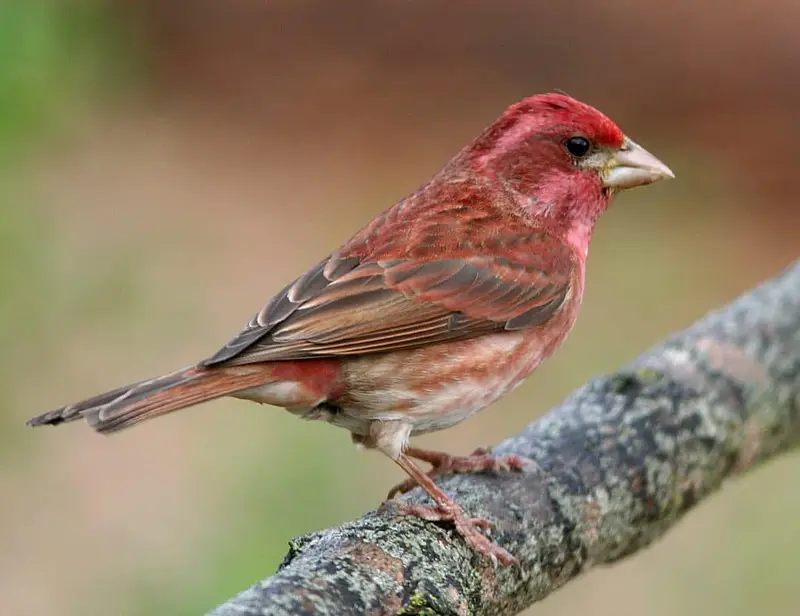
Fun Facts:
- These birds have bills that are designed for breaking different seeds open. Their favourite seeds include black oil sunflower seeds and safflower seeds. They also enjoy eating nectar and occasionally consume flower buds.
- Purple Finches weigh just slightly more than House Finches at 18-32g. They also have very small wingspans which range from 22-26cm.
The Purple Finch, despite the name, is not actually covered in bright purple feathers. Instead their feathers have more of a deep raspberry colour to them. It is only the males that have these bright feathers covering their head and breast.
Females have no red and instead have brown streaky feathers and a white belly. These finches like to nest in coniferous trees and the female will take charge of making the nest from various twigs and vines.
These birds can actually be quite aggressive, though they will put on a bit of a show before making any actual attacks. This confrontation starts with one bird leaning forward and pointing their bill at the other individual.
If the other bird does not back off, they may then stand upright, hovering over the other bird pointing their bill down at them. Whilst actual pecking attacks are rare, females usually stand as the victor of these confrontations.
During the mating season, the males will sing a soft song for the females. They will hop around and fluff their feathers as they sing, in an attempt to attract the female.
You will find these finches in the northern regions of Florida, where you will find them, however, depends on the season. During the summer months, Purple finches will stay away from urban areas and housing.
They prefer to stay in deep and damp coniferous forests. You are much more likely to see one in your backyard during winter when food is scarce, and they rely much more on manmade bird feeders.
If you want to see a Purple Finch in your garden, make sure to have a variety of feeders present in the winter months.
These birds also like to perch whilst they eat so try to have feeders with a perching stoop rather than a platform.
Filling these feeders with safflower seed gives you a better chance of seeing one. Whilst they also enjoy black oil sunflower seeds, other birds will be attracted to the sunflower seeds and put off Purple Finches.
3. American Goldfinch
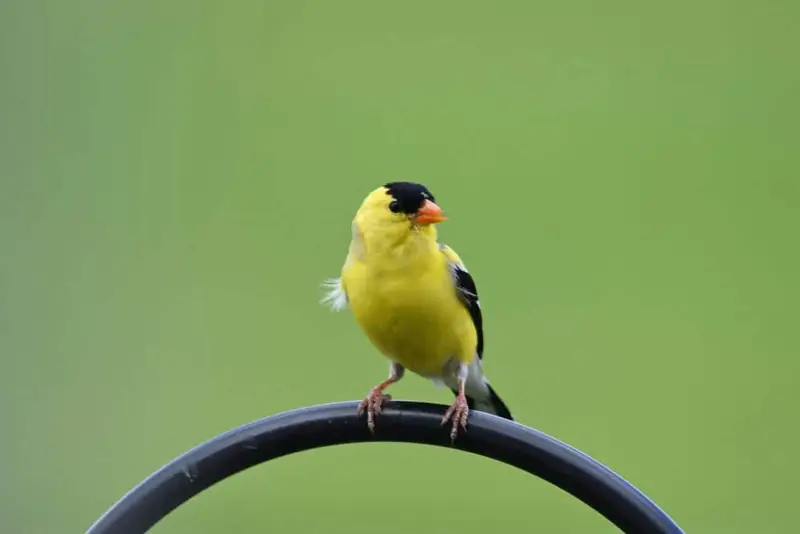
Fun Facts:
- American Goldfinches have a beak designed for eating small seeds. Nyjer seeds being a favourite of theirs. They rarely eat anything outside of the seed family.
- These finches are slightly smaller than the other finches that we’ve looked at, weighing only 11-20g. They also have a very tiny wingspan which measure 19-22cm.
During the spring and summer seasons, these birds have much brighter feathers than the drab brown colours they wear in the winter.
In the summer males are covered in bright yellow feathers, they have black feathers on their wings and their top head.
Females are also yellow, but it is a much duller yellow. The females of this species will build the nest, only after both the male and female have flown around together looking for an appropriate spot to mate.
American Goldfinches are very active birds and make their calls during flight. They are known for their calls that sound like a spelled out po-ta-to-chip.
These finches can be found all across the state of Florida. Whilst they are very popular in city parks and backyards, you can also see these birds in the wilder areas of the state.
They like to stay in weedy fields and usually make their nests in the tall shrubs of these fields, rather than in the trees.
As well as appropriate seed feeders, there are other ways in which you can help attract American Goldfinches to your garden.
As mentioned, you will need some seed feeders, preferably nyjer or sunflower seeds as these are a favourite of the finch. You can also grow certain flowers that will attract them, these include coneflowers and sunflowers.
4. Pine Siskin
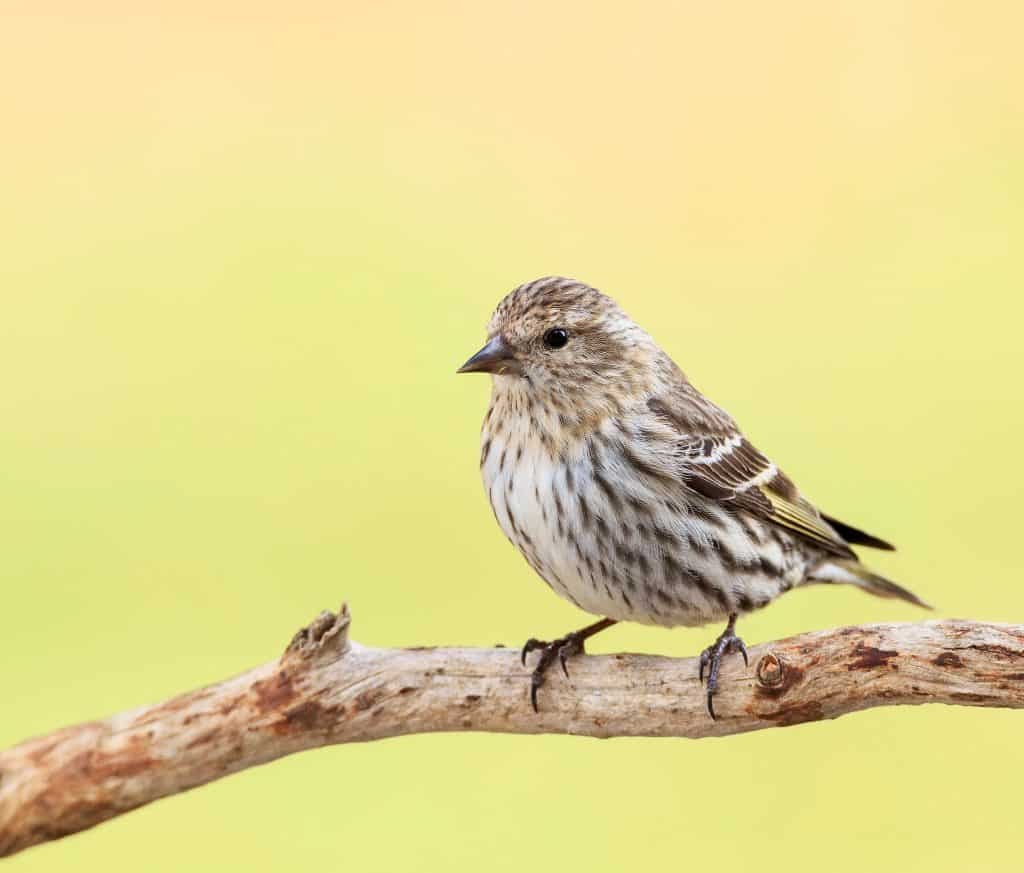
Fun Facts:
- These birds have beaks designed for eating seeds and, as the name suggests, they mostly eat seeds from the pine family. As well as seeds, they have also been known to forage for small insects, these insects are usually aphids.
- Pine Siskins are very similar in size to the American Goldfinch, weighing in at a range of 12-18g. Like other finches, they also have small wingspans of 18-22cm.
Pine Siskins are known for their small, sharp bills. They are covered in vivid streaking patterns, the feather colours usually being brown or a dull yellow in colour.
During the mating season the males will flutter out their wing tips to give a stronger flash of yellow when flying, in hope of attracting females.
Males will also perch on high branches to give their courting sounds. These birds are not very territorial and breeding pairs will often visit the broods of other nesting pairs.
Pine Siskins stay in somewhat loosely structured colonies and only tend to get aggressive around food sources during the winter months.
Pine Siskins are rare in Florida compared to the other finches that we have looked at. They are only found in the most northern regions of the state.
They are often seen in human areas such as gardens and graveyards, but in the wild they tend to prefer staying in tall coniferous forests where they make their nests.
You are more likely to attract a Pine Siskin to your garden in the winter months when food is scarce in the wild.
They prefer to eat pine seeds and a variety of different seed feeders will greatly increase your chances of having this finch visit. They can also be lured over by using mineral deposits, these are especially effective in winter.

More Articles.
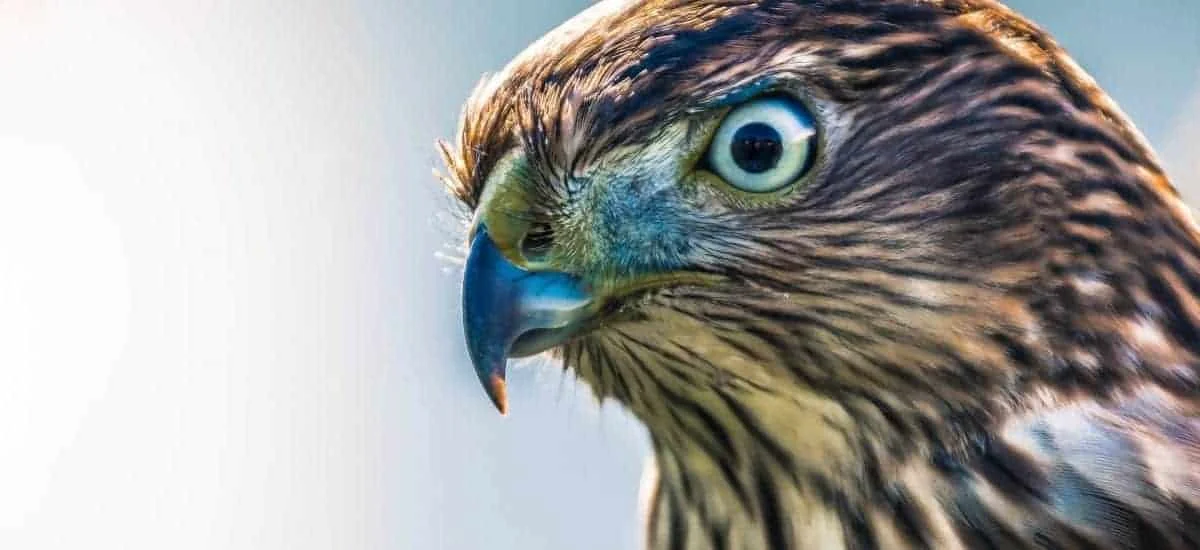
How To Attract Birds Of Prey To Your Yard?
The best way to attract birds of prey into your yard is by creating a
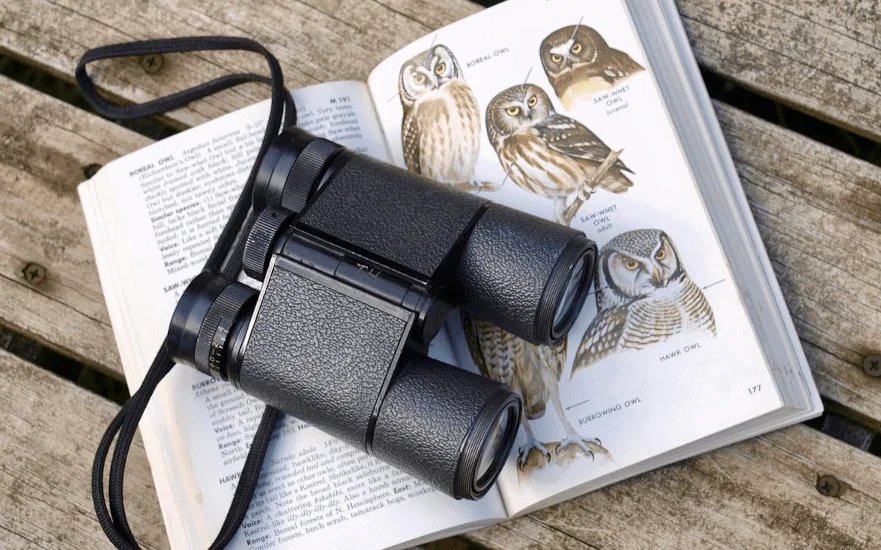
Best Binoculars for Bird Watching 2020
Article Summary: Best Budget Binoculars: Nikon 8250 Aculon 16×50 Best Mid-tier Binoculars: Nikon Monarch 5
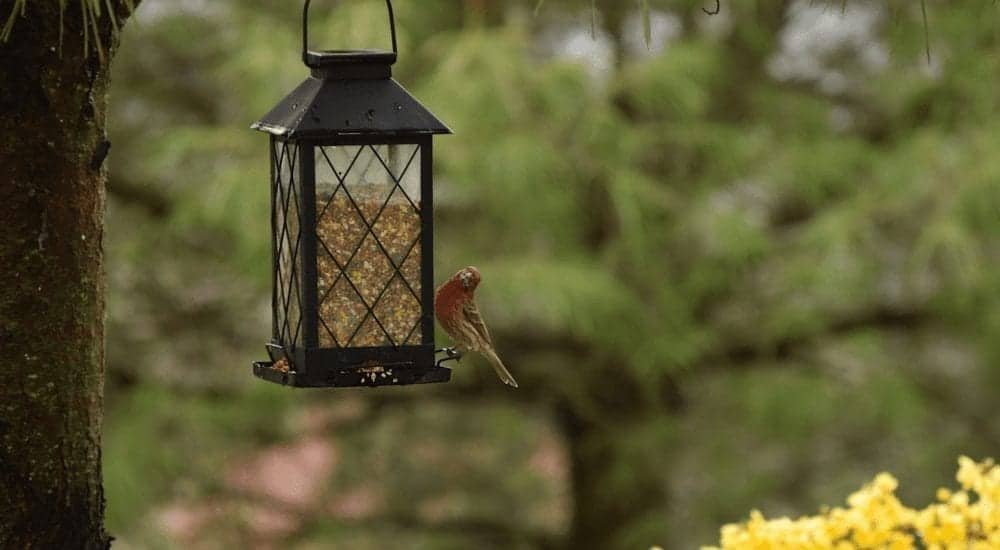
Bird feeders are a key part of any yard that wants to attract birds. They

About Us
We are avid bird-watchers who recently retired, allowing us more time to travel the world. Fortunately, we have managed to visit numerous countries around Europe, Asia, and America. Watching and photographing birds has been a passion for many years and we are making the most of the extra time on our hands!
